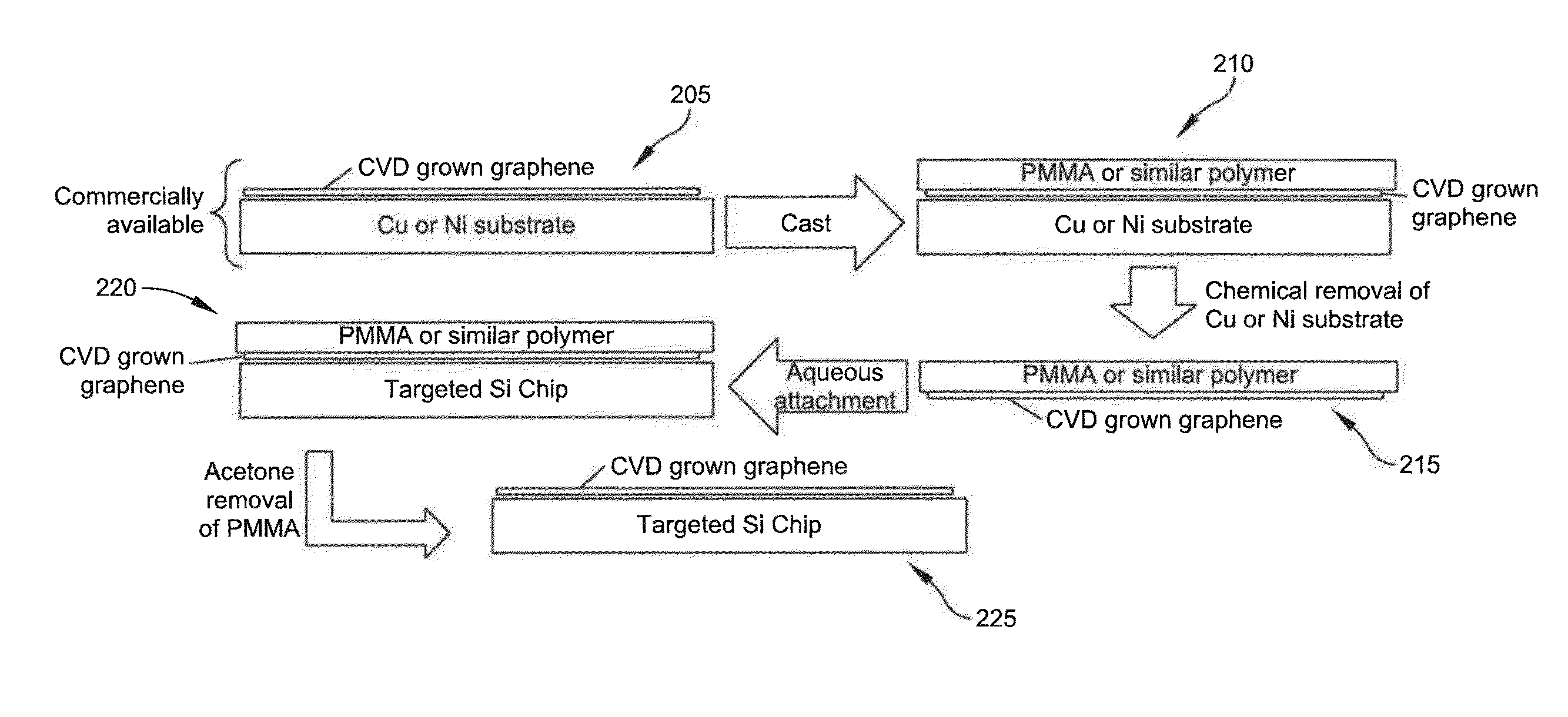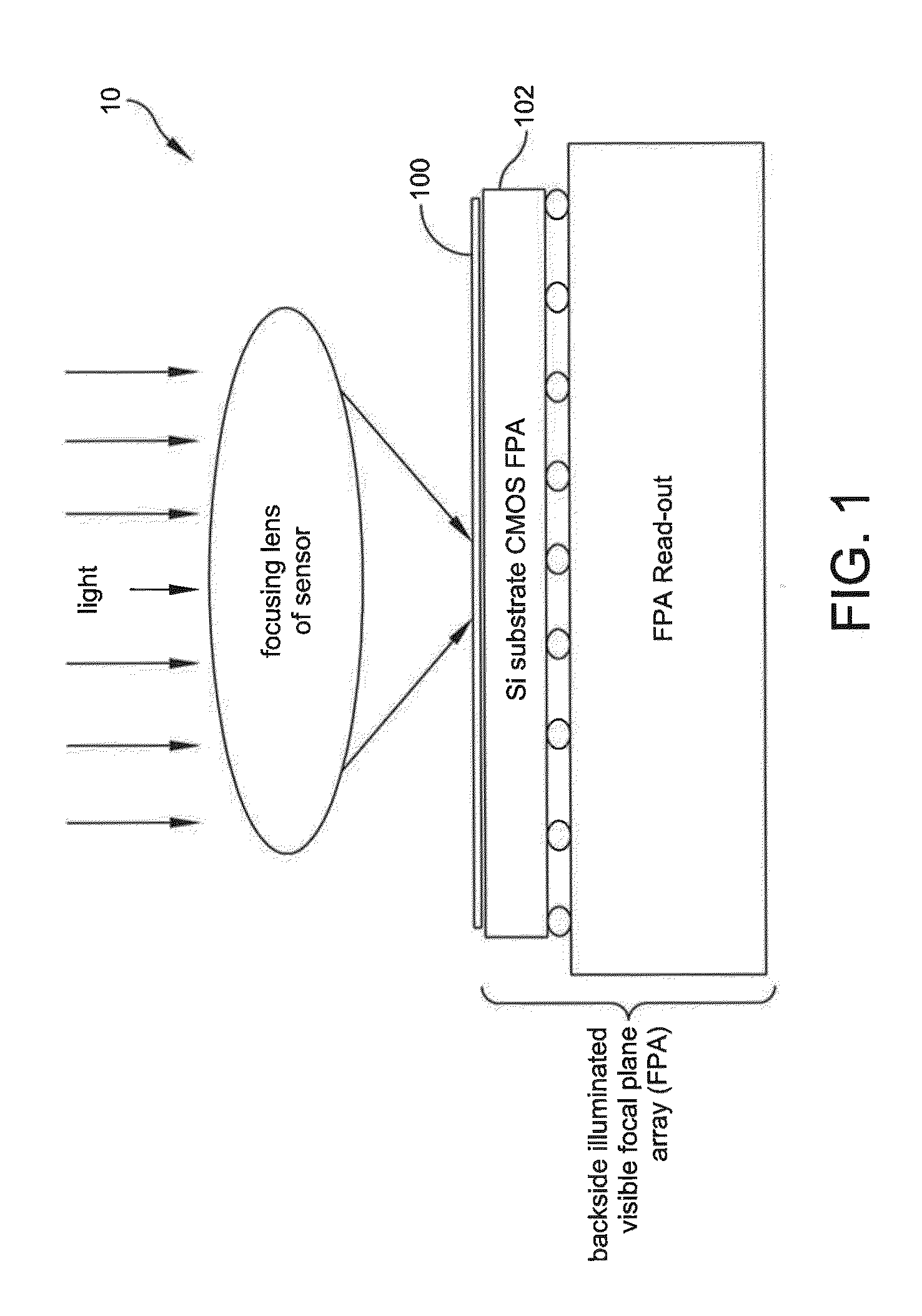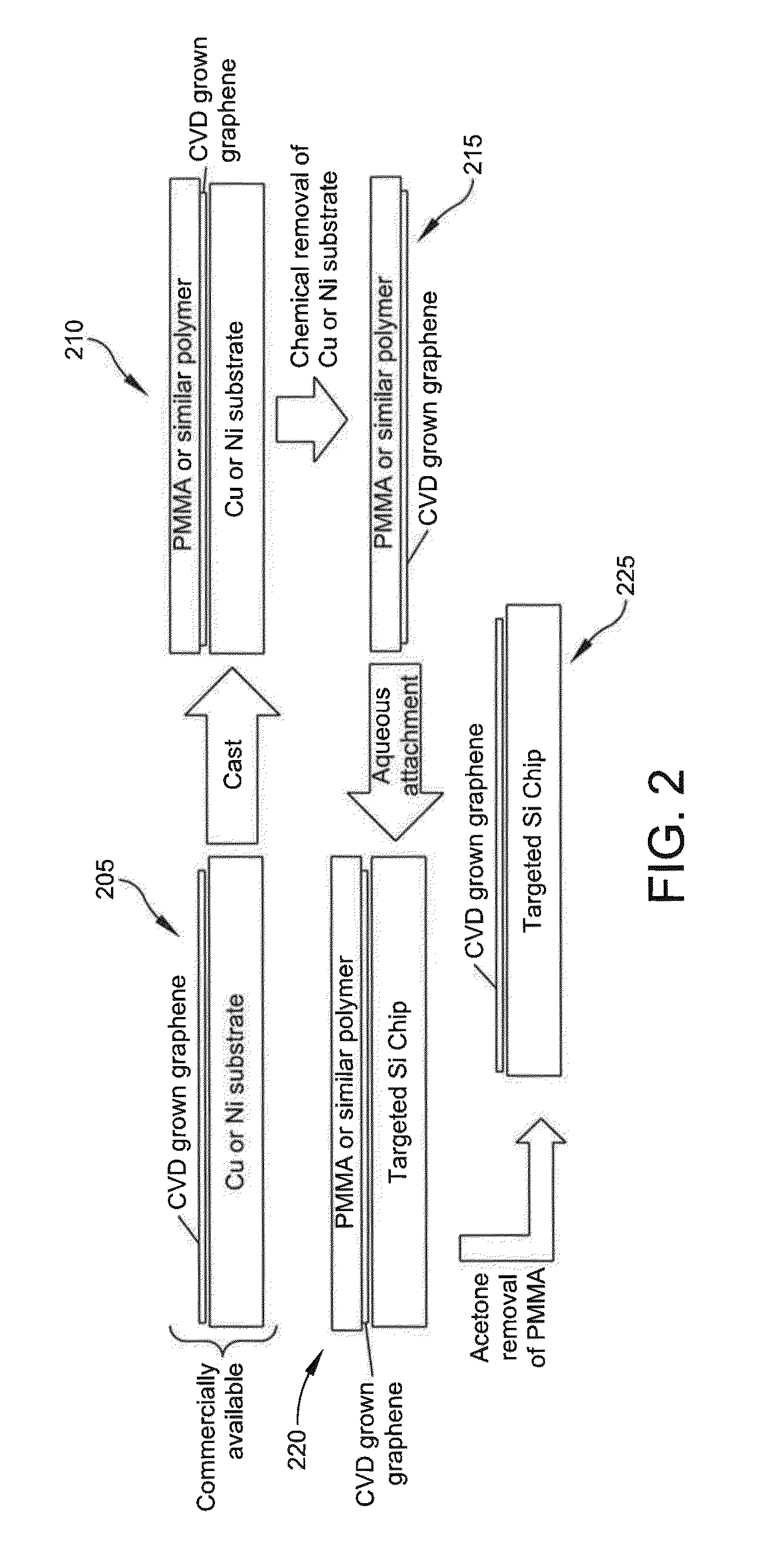Broadband graphene-based optical limiter for the protection of backside illuminated CMOS detectors
a detector and optical limiter technology, applied in the protection field of laser hardening components, can solve the problems of aggravate detection, reduce the quality of obtained and processed information, and may be relatively expensive for filters
- Summary
- Abstract
- Description
- Claims
- Application Information
AI Technical Summary
Benefits of technology
Problems solved by technology
Method used
Image
Examples
example 1
Damage Induced without Use of an SLF
[0066]FIG. 3 illustrates thermally induced laser damage caused from 532 nm and 1064 nm lasers on an unprotected commercial BSI sensor. FIG. 4 includes three separate SEM images (at 430× magnification) of the morphology of the laser damage in FIG. 3. The SEM images were taken for the three largest damage spots marked in FIG. 3. In the most critical cases, the BSI silicon wafer contributed to the laser damage resistance, with the major damage modes including (1) thermally induced laser ablation, (2) radial fracturing, (3) melting of a kernel zone, and (4) large area thermal burning of the silicon substrate. The SEM images were taken for the three largest damage spots marked in FIG. 3. The major damage modes present in the images include thermally induced laser ablation, radial fracturing, melting of a kernel zone, and large area burning of the silicon substrate.
[0067]FIG. 5B details an exemplary EDX spectral response from inside a laser damage crate...
example 2
[0069]One or more of the disclosed SLFs may be used to alleviate some or all of the damage described above. For example, FIGS. 6A and 6B illustrate two images of graphene-epoxy layers deposited onto glass substrates. These two images define two different randomly distributed clusters of graphene embedded into an EPOTEK adhesive. The images were originally obtained at a magnification of 62.5× and then magnified by a factor of two. The image in FIG. 6A was obtained from a 2% nano-powder graphene / epoxy mixture that included EPOTEK 353ND and 327 as the requisite epoxy. The image in FIG. 6B conveys a concentration of nano-powder graphene in the epoxy to yield a transmission of 70%.
example 3
Performance Results of an Exemplary SLF
[0070]FIG. 7 is a chart illustrating the limiting effect of a graphene / polymer SLF having an approximately 100 micron thick polymer film deposited on a fused silica glass substrate. The mass concentration of graphene in the polymer was about 2%. The achieved transmission is about 80%. The results indicate that the graphene / polymer SLF is capable of limiting the damage to the detector. For example, as the intensity of the unwanted radiation increases, the limiter is able to preserve the functionality of the detector (indicated by the output energy on the Y-axis energy scale) up to a certain level (from about 400 and lower on the X-axis energy scale).
[0071]FIGS. 8A and 8B compare the results of induced laser damage on two different substrates. FIG. 8A illustrates damage induced by a laser on a conventional glass substrate coated with a layer of CNT / C60 that is mounted 300 microns above the detector. FIG. 8B illustrates laser damage induced by a l...
PUM
| Property | Measurement | Unit |
|---|---|---|
| thickness | aaaaa | aaaaa |
| wavelength | aaaaa | aaaaa |
| wavelength | aaaaa | aaaaa |
Abstract
Description
Claims
Application Information
 Login to View More
Login to View More - R&D
- Intellectual Property
- Life Sciences
- Materials
- Tech Scout
- Unparalleled Data Quality
- Higher Quality Content
- 60% Fewer Hallucinations
Browse by: Latest US Patents, China's latest patents, Technical Efficacy Thesaurus, Application Domain, Technology Topic, Popular Technical Reports.
© 2025 PatSnap. All rights reserved.Legal|Privacy policy|Modern Slavery Act Transparency Statement|Sitemap|About US| Contact US: help@patsnap.com



